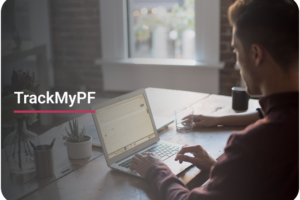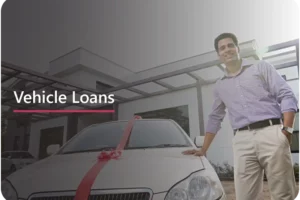Car insurance is a vital component of responsible car ownership. Knowing how to check car insurance is crucial. It provides financial protection in the event of accidents, damage, or theft. Moreover, to ensure that you’re adequately covered and your policy is up-to-date, it’s yet again essential to know how to check your car insurance. In this comprehensive guide, we’ll walk you through the steps to verify your car insurance policy details.
1. Locate Your Insurance Policy Documents
Before you can check your car insurance, gather your policy documents. These typically include your insurance card, policy booklet, and any correspondence from your insurance company. Your policy number and insurer’s contact information will be essential for this process.
2. Review Your Insurance Card
An insurance card is a document that proves that you have health insurance coverage.
Insurance cards are important because they allow you to get medical care without having to pay the full cost out of pocket. When you go to the doctor or hospital, you can just show your insurance card to verify your coverage.
Like a business card, an insurance card typically contains the following important information:
- Policyholder’s Name: Ensure that the name on the card matches your name and that of any other drivers listed on the policy.
- Policy Number: This unique identifier is crucial when contacting your insurer or verifying coverage.
- Effective Dates: Check the policy’s start and end dates to ensure it’s active. Renew your policy before the expiration date to avoid gaps in coverage.
- Type of Insurance: This will either be the name of the car insurance policy you have opted for or whether it is comprehensive or third-party only.
- Name of Insurance Company: The name of your insurance provider will be prominently printed on the insurance card.
The insurance card may also include other information, such as your date of birth, policy limits, and network providers.
3. Contact Your Insurance Company
If you don’t have your insurance card or need additional information, reach out to your insurance company. You can find their contact information on their website or in your policy documents. Be prepared to provide your policy number and personal details to verify your identity.
4. Verify Coverage Limits
Review your insurance policy to understand your coverage limits. Key coverage types to check include:
- Liability Coverage:
- Bodily Injury Liability: This aspect of liability coverage pays for medical expenses, rehabilitation, and often legal fees if you’re found responsible for injuring others in an accident. This could include coverage for the other driver, passengers in their vehicle, pedestrians, or cyclists harmed as a result of the accident. Bodily injury liability coverage helps protect your personal assets by ensuring that the injured party receives compensation without you having to pay out of pocket up to the policy limits.
- Property Damage Liability: This part of liability coverage pays for the repair or replacement of property you damage in an accident, typically focusing on the other party’s vehicle but also covering other damaged property like fences, buildings, or road signs. Property damage liability coverage helps ensure that you’re not financially responsible for these expenses up to the policy limits.
- Collision Coverage:
Coverage for Your Vehicle: Collision coverage is often optional, but it’s valuable if you want to protect your own vehicle in case of an accident, regardless of fault. This coverage pays for the repair or replacement of your car if it’s damaged in a collision with another vehicle or an object, such as a tree or a guardrail. You’ll be responsible for paying your deductible, and the insurance company covers the rest up to the policy limits.
- Comprehensive Coverage:
Protection Against Non-Collision Damage: Comprehensive coverage, like collision coverage, is optional but provides protection for your vehicle against various non-collision events. It covers damage caused by events such as theft, vandalism, fire, natural disasters (e.g., hail damage or flood), falling objects (e.g., a tree branch), and animal collisions (e.g., hitting a deer). As with collision coverage, you’ll have a deductible, and your insurance company pays for the remaining repair or replacement costs up to the policy limits.
- Uninsured/Underinsured Motorist Coverage:
Protection When Others Lack Coverage: Uninsured motorist coverage (UM) and underinsured motorist coverage (UIM) are crucial if you’re involved in an accident with a driver who either has no insurance (uninsured) or has insurance that doesn’t cover all your damages (underinsured). UM coverage typically helps cover your medical expenses and, in some cases, property damage when the at-fault party lacks insurance. UIM coverage steps in when the at-fault driver’s insurance limits are insufficient to cover your injuries and damages fully.
5. Check the Deductibles
Examine your policy for deductibles, which are the amounts you’re responsible for paying before your insurance kicks in. Understanding your deductibles can help you plan for potential out-of-pocket expenses in the event of a claim. Here are some of the most car insurance deductibles that may be a part of your policy:
- Collision Deductible
This deductible applies when you make a claim for damages to your own vehicle resulting from a collision with another vehicle or object.
- Comprehensive Deductible
This deductible applies when you make a claim for damages to your vehicle that are not the result of a collision, such as theft, vandalism, fire, natural disasters, or animal collisions.
- Liability Deductible
Some policies may have a deductible for liability coverage, which typically applies when you’re sued for causing injury or property damage to others. However, liability coverage generally doesn’t have deductibles in the same way that physical damage coverages (collision and comprehensive) do.
6. Add-on Riders
You can add or remove any riders to your policy depending upon your needs and requirements. Following are the most popular car insurance riders you can choose:
- Roadside Assistance: This rider provides coverage for services like towing, flat tire repair, battery jump-starts, and locksmith services when you’re stranded due to a vehicle breakdown. It’s especially useful if you often travel long distances or in areas where help may be limited.
- Rental Car Reimbursement: With this rider, your insurance company will cover the cost of a rental car while your vehicle is being repaired after an accident or covered event. This can help you maintain your daily routine even when your car is in the shop.
- Gap Insurance: Gap insurance, or Guaranteed Asset Protection, is a rider that covers the difference between your car’s actual cash value (the amount it’s worth at the time of a claim) and the amount you owe on your auto loan or lease. It’s useful if you owe more on your vehicle than it’s worth.
- Accident Forgiveness: This rider may prevent your insurance premiums from increasing after your first at-fault accident, keeping your rates stable even if you make a mistake on the road.
- New Car Replacement: If your vehicle is totaled within a certain time frame (typically within the first year or two of purchase), this rider can provide coverage for the cost of replacing it with a brand-new vehicle, rather than paying out the actual cash value.
- Custom Equipment Coverage: If you’ve made significant aftermarket modifications or additions to your vehicle, such as custom wheels, a stereo system, or specialized equipment, this rider can ensure that these items are adequately covered in the event of damage or theft.
- Personal Injury Protection (PIP): While PIP coverage is mandatory in some states, in others, it’s optional. PIP covers medical expenses, lost wages, and other expenses for you and your passengers in the event of an accident, regardless of who is at fault. You can often adjust the coverage limits to suit your needs.
- Non-Owner Car Insurance: If you don’t own a car but regularly drive rental cars or borrow vehicles from others, a non-owner car insurance policy can provide liability coverage for you as a driver. This rider is helpful for individuals who want continuous insurance coverage even when they don’t own a vehicle.
- Full Glass Coverage: This rider covers the repair or replacement of your vehicle’s glass (windshield, windows, and sunroof) without a deductible, making it a cost-effective option for glass damage repairs.
- Customary Use Coverage: If you use your vehicle for non-standard purposes, such as ridesharing or food delivery services, you may need this rider to ensure proper coverage. Standard personal auto insurance policies often exclude such commercial activities.
7. Update Personal Information (if applicable)
Verify that your personal information, such as your address and contact details, is current. Accurate information ensures you receive important policy updates and communications.
8. Confirm Premium Payments
Ensure that your premium payments are up-to-date to maintain continuous coverage. Most insurers offer various payment options, including monthly, quarterly, or annually.
9. Understand Claims Procedures
Familiarize yourself with the claims process outlined in your policy documents. Knowing how to report a claim and what information you need can streamline the process if you’re involved in an accident.
10. Proof of Insurance
Print a copy of the proof of insurance if you haven’t already. Always carry proof of insurance in your vehicle. In many places, it’s a legal requirement, and it’s essential during traffic stops or accidents.
Conclusion
In the realm of responsible car ownership, checking your car insurance is a crucial task that ensures you’re adequately protected on the road. However, car insurance is not a one-size-fits-all solution, and your coverage needs may change over time. Regularly reviewing your policy allows you to make informed decisions about your coverage, deductible amounts, discounts, and endorsements. It also ensures that your personal information is accurate and up-to-date.
Ultimately, staying proactive about your car insurance helps you maintain continuous coverage and make the most of the protection it provides. So, take a few moments to review your car insurance policy today—it’s a small effort that can yield significant peace of mind on the road. Safe driving!















